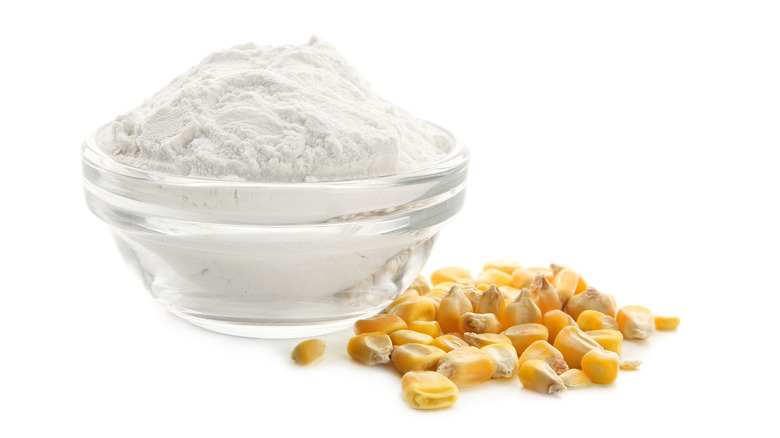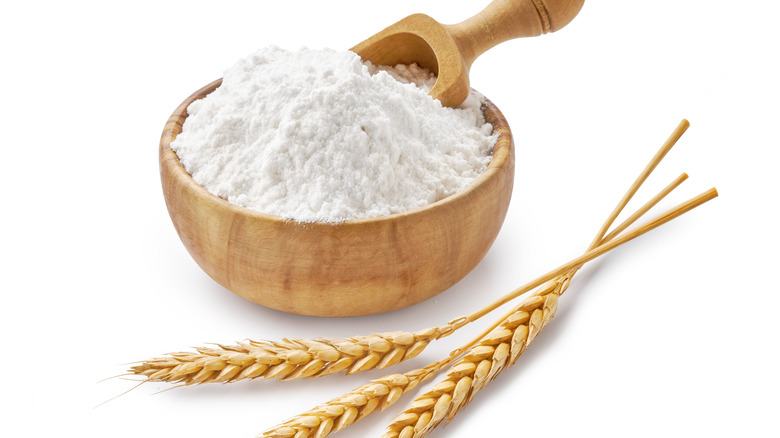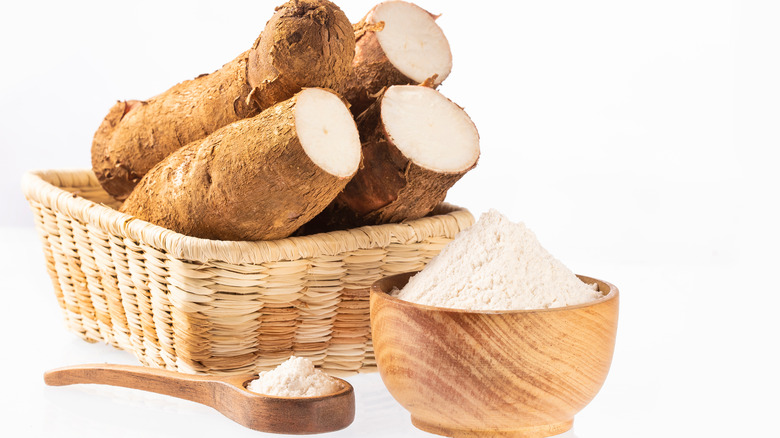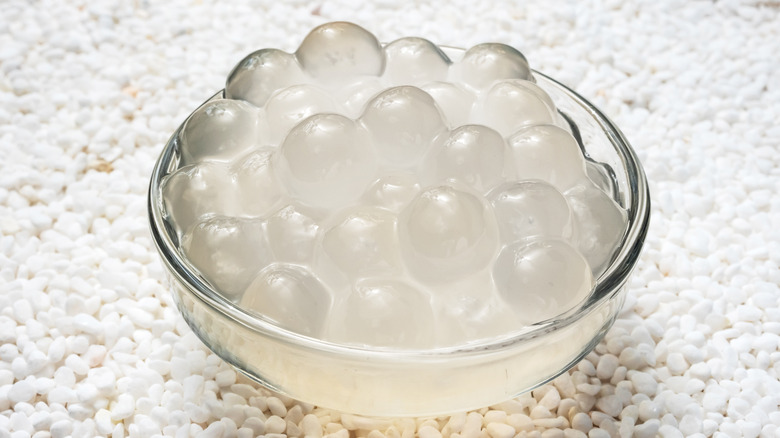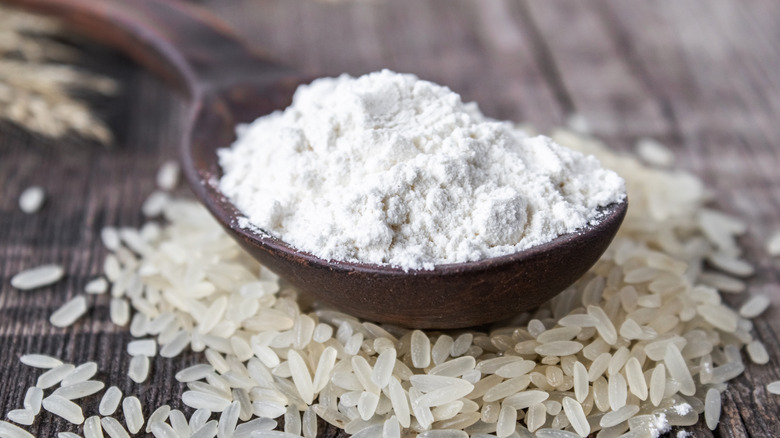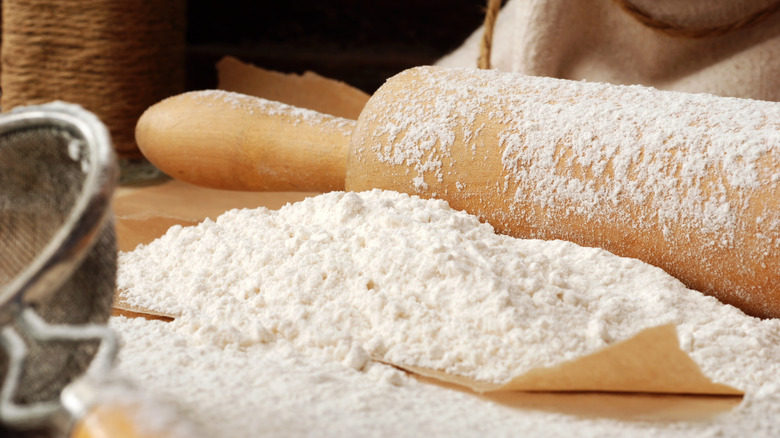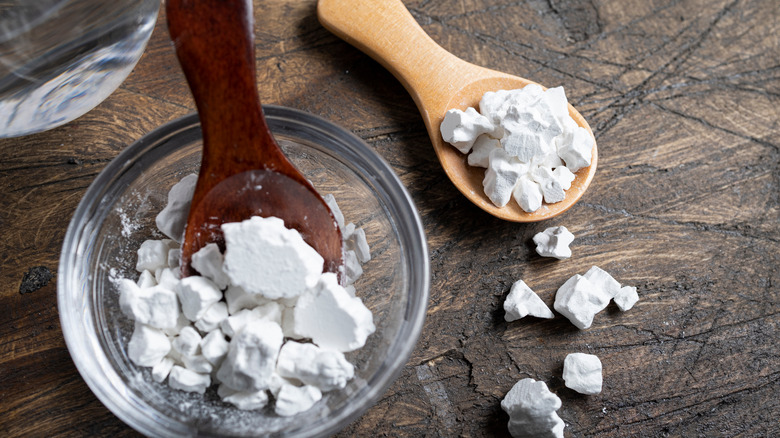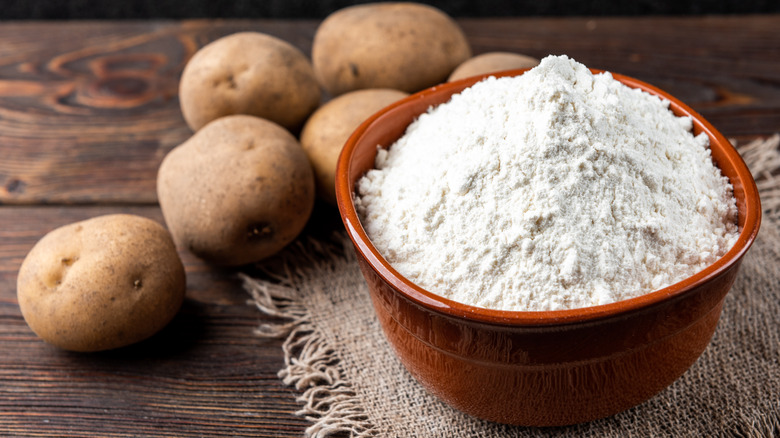7 Best Substitutes For Cornstarch
Cornstarch, which is made by grinding up the center of a corn kernel, is a white powder used to thicken sauces, soups, gravies, and even custards. According to MyRecipes, cornstarch came into existence in 1842 when Thomas Kingford was messing around in a wheat starch factory in New Jersey and found a way to separate the endosperm — the part of the corn kernel seed that contains starch — and turned it into what we call cornstarch.
Cornstarch is easy to use and has the seemingly magical power to give foods a glossy finish. Per Science of Cooking, when you combine cornstarch with a liquid like water or stock, it creates a semi-transparent mixture that thickens up your dish without changing the flavor of whatever you are making. But what should you do when it comes time to thicken up your stew or sauce, and you realize you have no cornstarch in your pantry? The good news is there are several other thickening ingredients that you can use instead, and you probably have them in your kitchen already. You may even find you actually like one of these alternatives more than cornstarch.
1. Wheat flour
If you find you have no cornstarch hiding in the back of your kitchen cabinets, don't stress. Healthline notes that you can always use plain old wheat flour instead. However, due to wheat flour's fiber content, you will need to use twice as much in order to achieve the type of viscosity you get with cornstarch.
Like with cornstarch, you'll want to combine your flour with some cold water until you have a smooth and lump-free paste. Epicurious shares that when you use any type of flour as a substitute for cornstarch, you won't necessarily get that shine cornstarch adds to a dish. And ideally, they suggest giving your dish a little extra cooking time — just a few minutes — so the raw flour flavor has time to cook out.
Healthline suggests substituting 2 tablespoons of flour for every 1 tablespoon of cornstarch, while Epicurious recommends upping that to 3 tablespoons, so use your best judgement depending on what you're making.
2. Arrowroot
If you don't have any wheat flour either, no problem. You can also use arrowroot as a cornstarch substitute. Arrowroot is also a white powder, but it is derived from tropical plants. This gluten-free option produces a clear solution if you mix it with water, and it will give you similar results to cornstarch. However, you will also need to double the amount of arrowroot you use if you want a thick sauce.
Arrowroot, like wheat flour, also contains fiber, which makes it a more favorable alternative to cornstarch for some people. Keep in mind though, you will have to cook your sauce longer, as arrowroot takes more time than cornstarch to thicken up (via MyRecipes).
Epicurious notes that unlike flour, arrowroot will provide the same glossy appearance that cornstarch produces, which is good to know if that's an important aspect of the dish you are creating. Additionally, they share that because it is an equal swap of cornstarch to arrowroot, this is an easy substitution.
3. Tapioca
Science of Cooking notes that you can also use tapioca as a substitute for cornstarch. Tapioca is a starch that is derived from a tuber called cassava root. In flour form, tapioca is like arrowroot in that it turns clear after being thoroughly mixed with liquid. Its biggest drawback, per The Spruce Eats, is that it is less versatile than other substitutes — it shouldn't be used in dairy-based dishes and, as Food52 notes, can get "stringy" when boiled. The site also recommends mixing your tapioca with your nondairy liquid of choice 10 minutes before you start cooking with it so that the tapioca has time to work its thickening magic. However, unlike cornstarch, tapioca works well in frozen dishes and can create an even shinier gloss than cornstarch.
Food52 cautions that you will need to do a 2 to 1 substitution because tapioca flour is not as strong as cornstarch.
4. Rice Flour
If the above substitutes are not an option, try rice flour, which can also be used instead of cornstarch. According to the Science of Cooking, rice flour is finely milled rice and perfect for those leading a gluten-free lifestyle. Its neutral flavor also means it won't add any subtle new tastes to your recipes if you need to swap in this ingredient for cornstarch.
What makes rice flour appealing as a thickening ingredient is that it if a dish requires freezing, you don't have to worry about it separating. Healthline notes that this substitute for cornstarch also mixes clear so you don't have to worry about the colors of your final product looking a little off. That said, you will need to use twice the amount of rice flour as you would use of cornstarch to get the results you want. Food52 shares that one of their writers likes to utilize this swap when making shortbread.
5. All Purpose Flour
Don't forget about your all-purpose flour, which may be the most common ingredient to use as a substitute for cornstarch on this list. Not to mention, most people — even those who rarely bake — have flour stashed away in a canister. All-purpose flour is similar to wheat flour in that it will change the appearance of your dish, i.e. no shine. But that's really the only noticeable result in the final product.
Substituting all-purpose flour for cornstarch is rather easy. Epicurious notes that you will need more flour than cornstarch when you swap the two and will need to do a 3 to 1 substitution. This is done by forming a roux or paste that generally involves melting butter and then mixing in the flour. However, it doesn't thicken up your sauces and gravies as well as cornstarch. Still, The Spruce Eats notes that it is a good option, especially if you're making a sauce with dairy.
6. Japanese arrowroot or kuzu
Japanese arrowroot or kuzu can also serve your substitution needs. According to the Gourmet Sleuth, kuzu is an invasive vine that is generally sold in flake form, but also comes in a powder. Cooking with Yoshiko notes that kuzu roots, which are native to China and Japan, can grow taller than an adult male, and kuzu starch has a variety of uses and even works to add creaminess to nondairy cheesecake! This starchy root has been around for well over 1,000 years. It's considered a "fundamental" part of traditional Chinese medicine — Cooking with Yoshiko even deems it "the healthiest cooking starch."
Science of Cooking notes that kuzu gels really well, and it is also fat- and sodium-free. For best results, use 1¾ tablespoons of kuzu starch for every 1 tablespoon of cornstarch, and make sure to dissolve it thoroughly in cold liquid before adding it to a dish.
7. Potato Starch
No Japanese arrowroot in sight? Try potato starch. Potato starch, which is a flour that is made from potatoes, is a gluten-free thickener that is best for soups and gravies. It must be mixed with water before it's used, but Science of Cooking cautions that if you use potato starch in place of cornstarch, the liquid should not be brought to a boil.
Recipes that call for potato starch as a thickener often will add it later in the cooking process, per Healthline, but Epicurious cautions that it is prone to clumping — yuck — so whisk with care.
If you substitute potato starch for cornstarch, it is a 1 to 1 substitution, which certainly adds to the ease of this option. However, Food52 shares that dishes thickened with potato starch don't hold up very well. So, don't plan on having whatever recipe you are making the next day as a leftover.
